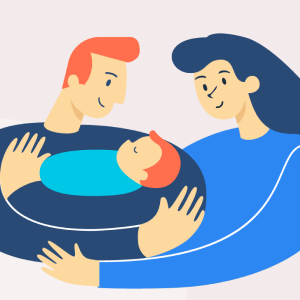Hair disorders which are accompanied by hair loss have been rising in number. Hair loss can either be scarring or non-scarring. There have also been instances of patients complaining about scalp changes such as redness, scaling or drying, as well as itching and pain.
Getting to Know Some of the Common Hair Disorders
The most common hair disorders include androgenetic alopecia (better known as male or female-pattern baldness) and alopecia areata, which is associated with bald patches. Other hair and scalp disorders that are also common include scalp psoriasis, seborrhoeic dermatitis and fungal infections (also known as tinea capitis).
Androgenetic alopecia is associated with a sensitivity towards testosterone and is usually hereditary. In females, this condition can appear with elevated androgen (male hormone) levels and occurs comparatively in conditions such as polycystic ovarian syndrome. Acne, increased facial hair, irregular periods and fertility issues can also accompany this condition.
Alopecia areata is an autoimmune condition with a genetic predisposition, where approximately 20% of the patients who are affected have a family history of the same disorder. Alopecia areata is associated with other autoimmune conditions such as thyroid disorders, lupus and vitiligo.
Identifying Methods to Treat Hair Disorders
Minoxidil liquid or foam is often used for the treatment of androgenetic alopecia. Men can opt to use finasteride tablets. Women, on the other hand, can consider the use of pills that block the action of dihydrotestosterone (hormone with powerful androgenic properties). For example, pills such as spironolactone or cyproterone acetate.
It is also important to stay protected from sun exposure. This can be achieved through the use of wigs and hats, or the application of sunscreen creams. Alternatively, there are surgical options which include scalp reduction or hair transplant procedures. For example, follicular unit transplant (FUT) or follicular unit extraction (FUE). Other methods of treatment include low level laser light treatment or platelet rich plasma (PRP). However, more evidence is still needed to support the use of these treatment modalities. In cases of severe hair loss, using a hairpiece or camouflage can help provide a better cosmetic effect.
When treating alopecia areata, steroid creams or scalp applications can be used. Use of steroid injections are also effective. If a patient is suffering from a severe case of this hair disorder, however, oral medication such as steroids, methotrexate, sulfasalazine, cyclosporine and azathioprine may be used. Use of topical minoxidil can also encourage hair growth. Other treatment methods used for alopecia areata include contact sensitisation (using squaric acid dibutyl ester [SADBE] or diphenylcyclopropenone [DPCP]), platelet-rich plasma injections and photochemotherapy.
Caring for Your Hair
Minimising hair loss usually relates to the adoption of a healthy lifestyle. This includes consuming a balanced diet, maintaining a healthy weight, reducing stress, avoiding smoking, and reducing exposure to ultraviolet radiation.
When it comes to hair care, avoid brushing forcefully when hair is wet. Instead, untangle hair using a comb or fingers. It is also important to reduce the use of hot combs, perms, weaves, chemical relaxers and hair dryers.
Doctors are usually able to diagnose hair disorders quite easily through the examination of symptoms. This includes the degree of hair loss, as well as an examination of hairs and scalp from affected areas under a microscope. If however, a doctor cannot make a diagnosis based on a clinical examination, he/she will then perform a scalp biopsy.
To rule out autoimmune diseases, a blood test could be run as well. Therefore, since the symptoms of hair disorders are distinctive in nature, seek consultation with a doctor as soon as possible in order to get it treated effectively.
Hello Health Group does not provide medical advice, diagnosis or treatment.
Penafian
Hello Health Group tidak menawarkan nasihat perubatan, diagnosis atau rawatan.






















Komen
Kongsi komen anda
Ayuh jadi yang pertama untuk memberi komen!
Sertai Kami atau Log Masuk untuk menghantar komen